“The weather made me fat!” If you heard someone say this, you’d probably laugh and toss it into the same pile of excuses as, “Sorry, can’t exercise today… workout clothes are all dirty.” But the truth is, there really are scientifically-confirmed reasons for winter weight gain. Fortunately, there are also solutions, and they’re simple, if not easy. If you live where the seasons change, or even worse, where the weather is cold and cloudy most of the year, or if snow, ice and freezing rain dash your plans for outdoor exercise, and you’re worried about your waistline, then this week’s Burn The Fat Q & A is a must-read…
QUESTION: Hey Tom, is there any evidence that during cold weather and in the winter it gets harder to lose body fat? For me, it seems easier to lose weight during the hot weather. I was wondering if there’s a reason for this? Maybe you crave different kinds of food? Do you lose your appetite in the summer heat? Or does appetite goes up in the cold? Does metabolism go down in the winter? If you have any information on this, I would be grateful. Thanks!
ANSWER: Yes, there are many reasons why many people tend to gain fat in the winter. They are both physical and mental. From a psychological point of view, here’s one simple explanation: The changing seasons can affect your mood.
A condition known as seasonal affective disorder (SAD) has been studied at length by psychologists and psychiatrists. Often much more than just the “winter blues” but an actual type of depression, SAD occurs during the short days and long nights of winter and fall and when there are colder temperatures and less sunlight.
Symptoms include depression, cravings for specific foods, especially calorie-dense carbs, loss of energy, feelings of hopelessness, and oversleeping. Obviously, all of these effects can lead to weight gain.
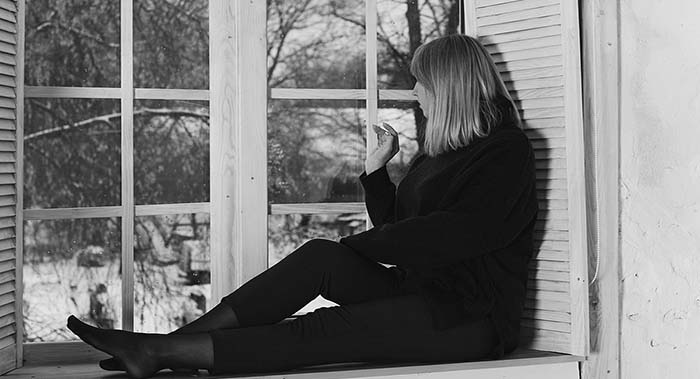
In a Swiss study titled, “Eating style in seasonal affective disorder: who will gain weight in winter?” researchers discovered that not only did patients with SAD eat more sugar and starch-rich foods, they were also more susceptible to emotional eating, reaching for sweets under emotionally difficult conditions such as when anxious, hungry, tired, or lonely. One of the standard treatments for SAD is bright light therapy. Making sure you get enough quality sleep, but also getting up at first light is also important to maximize hours of natural light exposure.
Another psychological way weather affects food intake, activity and fat loss is that in warm climates, people are outdoors wearing less clothes, so this creates more motivation. Let’s face it, people want to look good when they aren’t wearing as much. In winter and in cold climates, you’re covered up, so there’s less self consciousness and no accountability since you usually won’t be seen in public in shorts and tank top. Therefore, most people tend to stay on a diet more diligently and train harder in the warmer months. (It’s no coincidence that so many bodybuilders bulk in the winter, and cut for the summer).
Of course, then we have the issue of Thanksgiving and Christmas – a traditional time of celebrating, feasting, drinking and gift-giving (where sometimes the gifts are edible too!) Many people worry about the holidays because they think they’ll gain 5 or even 10 pounds between Turkey day and the New Year. Studies have shown that seasonal weight gain is real, though it’s usually very small – typically only about a pound, two at most if you average it out in a large population. (Only about 10% gain 5 pounds or more).
The problem is, longer-term research has also found that it’s the type of slow weight creep that often goes unnoticed, and over a period of 10, 15 or 20 years, is enough to lead to overweight or obesity. This is how many men and women wake up one morning at age 40 or 50, look in the mirror and ask themselves, “how did I get so heavy?” (a pound or two a year, after every winter season, left unchecked).
The most famous study on his subject was published in the prestigious New England Journal of Medicine. Here’s what the authors concluded:
In contrast to the common perception that weight increases during the winter holiday season, the weight of the vast majority of subjects in this study changed little between Thanksgiving and New Year’s Day. The subjects believed they had gained four times as much weight as their actual holiday weight gain of 0.37 kg. Fewer than 10 percent of subjects gained 2.3 kg or more. Thus, despite the fact that 85 percent of the study subjects made no effort to control their weight, large weight gains over the winter holiday season were not the norm. Unfortunately, we also found that the weight gain during the fall pre-holiday period and the increase during the holiday season were largely maintained during the post-holiday winter period from January to March, resulting in a net average gain of 0.48 kg. In subjects who completed one year of observation, the weight increased by an average of 0.32 kg during the holiday period and 0.62 kg over the entire year, suggesting that the period contributing most to yearly weight change is the six-week holiday period.
Most of us do eat and drink more between Thanksgiving and New Year’s Day. However, some people have also proposed that there’s something else going on and that short days, gloomy weather, and cold temperatures must have something to do with fat gain on a physiological level. Does metabolism slow down in the winter, as if we are going into “hibernation mode?”
Actually, the reverse is true. Exposure to cold temperatures causes a shivering thermogenesis response which means there’s an increase in metabolism to produce more heat. To create heat requires energy (calories burned = heat).
In fact, over the years, many weight loss gurus have promoted the idea of cold exposure to boost metabolism, suggesting weird “hacks” like turning off the heat in your house, going outside under-dressed in the winter, swimming in freezing lakes or surf every day, or taking the bizarrely still popular cold showers.
Unfortunately, exposure to cold, either cold air or cold water, as an attempt to get your body burning more calories doesn’t pan out into real world fat loss results over time, even though short-term studies may show elevated calorie burning. Why not? Aside from the fact that it’s a tiny amount of extra calories burned, it’s just not practical or pleasant to freeze your butt off , so your attempt probably wouldn’t last long if you tried. Another reason is that your body can adapt and compensate for heat losses.
An intriguing example of the impact cold temperatures have on energy balance is the case of swimming. Parodoxically, it was observed that many people who took up swimming burned a ton of calories, but didn’t lose fat (or they even gained weight). At first some people thought the body was laying down fat for insulation. Sounds plausible, right? But after some astute scientists took a closer look, they found out that swimming can be an excellent fat-burning exercise, but many people don’t experience much fat loss from swimming because it also turns out that swimming, especially in cold water, increases appetite.
Therefore, we could hypothesize that the same might happen in cold weather (air) temperatures. If your body uses some energy for shivering or heat production, one way it can compensate for that energy loss is by increasing your appetite, so the negative energy balance, if any, is likely to be short term. (Amazing how your body works to counterbalance things isn’t it?)
Some scientists even suggest that eating more in the cold winter months is hard-wired into our biology as a survival mechanism. They theorize that humans have a natural tendency to eat more in winter because historically speaking, this was a time when there were shortages of food. While there’s virtually no chance of starving to death in modern industrialized society, we may be unconsciously giving in to evolutionary directives.
For a variety of possible reasons, most people tend to eat more in the winter, and especially during the holiday season. At the same time, we also move less.
A study conducted in Massachusetts and published in the European Journal of Clinical Nutrition made some interesting discoveries about seasonal variations in food intake, physical activity, and body weight in an overweight population. Key findings included:
- Daily caloric intake was 86 calories higher in cold months compared to spring
- Lowest physical activity was in fall and winter
- Body weight peaked in the winter
- All seasonal changes were fairly small, but significant enough to be measurable
Over the holidays, most people blame weight gain on the food, but it’s not just the Thanksgiving, Christmas and New Year’s celebration feasts, it’s also less activity through the whole winter that contributes to expanding waistlines. Outdoor exercise routines sometimes end abruptly and nothing is done to offset it. The usual excuse is weather (“It’s too cold” or “I can’t run / walk / cycle on snow and ice!” or “It’s dark before I’m home from work”).
The drop in activity is not just from fewer formal training sessions. The amount of walking around you do all day long takes a dip as well, especially if you’re not tracking it.
Pedometer research published in the journal Medicine and Science and Sports And Exercise has revealed just how much activity goes down in the winter compared to the other seasons. In a group of middle-aged women, who are generally less active than other groups to begin with, there was a large drop in steps taken per day from summer to fall to winter:
- 7616 steps per day in summer
- 6293 steps per day in fall
- 5304 steps per day in winter
- 5850 steps in spring
This is why using a step tracker like a fit bit or smart watch year-round is a great idea. You can see changes between your seasonal step counts and if you catch them dropping as winter arrives, you can adjust your activity easily simply because you were watching it and staying accountable. Also, while 10,000 steps a day (or more) can be daunting, it’s not that difficult to add an extra 2500 steps a day from wherever you are now. That’s enough to offset the average drop most people experience. Combine that with some accountability on the nutrition side, and this alone can keep winter weight gain at bay.
As you can see, there are legitimate reasons why it’s easier to get fatter in the colder months. If you do nothing to prevent it, there’s a good chance that you’ll put on at least a pound of fat and maybe two over the dark, cold winter. Because this amount of weight gain isn’t much, it’s especially dangerous because you either see it and brush it off as “not so bad” or it may slip by completely unnoticed at first, and it doesn’t come off – it sticks. In 10 years, you’re 10 to 20 pounds heavier. In 20 years, you’ve gained 20 to 40 pounds, all from slow weight creep.
Fortunately, winter weight gain is not a foregone conclusion. This is a battle you can win – fairly easily. To stay lean all year round, what you must do is stay active in winter, regardless of the weather, and stay diligent with your nutrition most of the time.
I suggest approaching winter nutrition and training in two phases. November and December are perfect months to set goals to close out the year strong. Create goals for this period and that will keep you motivated through the late fall and early winter. It’s a losing strategy to wait for the new year and have no new goals to work on over the holidays.
For over a decade, I promoted holiday fitness challenges that started before Thanksgiving and ran through the end of the year. If you ever have the chance to enter one, by all means, participate. If you can’t find a formal contest, challenge, race, or some kind of fitness event, create your own holiday challenge. And it’s never too late. Even if it’s Christmas Day, you could set goals for the last week of the year. I have friends who’ve made a tradition out of doing an epic New Year’s Eve workout.
If possible, invite friends to join you to increase accountability. If feasible, hire a coach to help create your plan and make you even more accountable. It’s amazing how motivated you’ll be and how hard you’ll work when you have to report your progress every week to a mentor or authority figure you respect. With a goal or challenge, a coach or support system, or both, trust me, the holidays won’t hold you back . You might even get in the best shape of your life.
The second phase starts in January. Although exercise and diet “New Year’s Resolutions” are so cliche’d, it makes people groan, I’m not against setting goals on the first of the year. I believe it’s a great time to think about what you want for the 12 months ahead. Be certain that your goals aren’t focused only on body weight or body fat, but also include goals for fitness, health, strength and performance. This will keep you far more motivated if you have a week when the scale doesn’t move.
A key with nutrition – all year round, but especially over the holidays – is flexible dieting. That means keep your nutrition on point 80% to 90% of the time, but enjoy all your favorite holiday foods in moderation. Avoid thinking dichotomously about food and calling some foods good and others bad. Never forget that you tend to crave what you’re not allowed to have. Rigid diets with forbidden food lists backfire, and even if they didn’t, restriction is no way to enjoy the festive season.
The best tricks for succeeding with your winter training are the same ones you should use all year round: To continuously set performance goals (have goals for every workout), create a plan with a weekly schedule you commit to, and stay accountable (have someone in your corner so you can show them your goals and your weekly progress toward your goals). Also make sure your plan includes a list of potential obstacles and what you’ll do if you encounter them, including contingencies for all kinds of weather. In addition, consider trying some training you’ve never done before. Trying totally new exercises, techniques, and schedules can add a spark of motivation and feeling of freshness that will keep you going on the gloomiest of days.
Of course it depends on the weather where you live, but it’s unlikely that you can’t put on a coat, hat, and gloves and go take a walk just because it’s winter. However, if it’s stormy or dangerously cold, or if it’s your preference, you can keep up your steps and cardio part of your plan indoors on a bike, treadmill, rower, or elliptical machine, or simply with body weight exercise if you don’t have cardio equipment. Yes you can!
You don’t need to brave driving through the elements to a gym to keep strength training either, you can do that at home as well. A home free-weight set up as simple as dumbbells and a bench, plus resistance bands and bodyweight training can take you a long way. Add more equipment if your space and budget allows (click here for some simple home gym equipment tips).
The winter months are also a great time to get adventurous, and try something new outside, namely, winter sports. Think about building that into your plan. I admit, I’ve never been a fan of cold, ice and snow. Even though hiking and backpacking are my favorite hobbies behind lifting, I’ve always been a three-season outdoorsman.
In late October, just as the first frosts were hitting and the leaves were falling, I decided that this would finally be the year I refused to stay cooped up inside. I made up my mind to keep hiking. I also set some running goals, doing as much of it as possible on the trails. All I had to do was invest in the right gear, shoes and warm layers and I kept going out the same as I did the rest of the year. I never had to step on the dreadmill. To my surprise, I loved staying outside, even in the cold and snow.
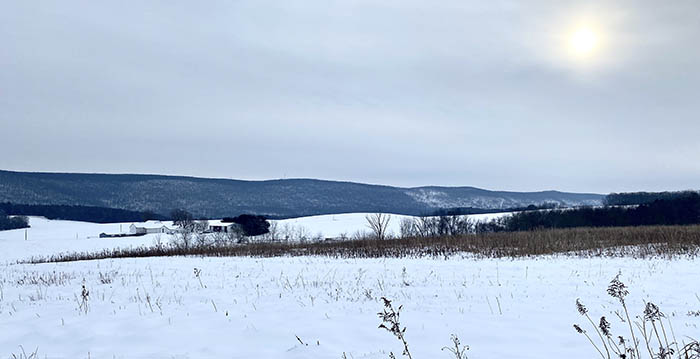
In December, after the first big storm, I did something I never thought I would: I bought my first pair of snowshoes and went out for over 5 miles the Sunday before Christmas. It was a quad burner and a serious test of cardio. I didn’t get traditional snowshoes either – I got racing (running) snowshoes. Bombing down the hills in packed snow was the most fun I had in years.
At the same time, for these last three months of the year, I decided to start a new lifting schedule with a hypertrophy-focused split routine I’d never tried before. (It’s a “3-2 Hybrid split” that I’ll write about in an upcoming post). I also included home gym equipment I had rarely used before – a landmine – along with my usual barbell and dumbbell exercises. (Watch for upcoming posts on landmine training too – it’s awesome!)
As a result of setting new goals, creating new programs and trying new things for the late fall and first part of winter, I was more engaged, enthusiastic, and motivated than ever, and my overall activity (steps, miles, calories burned), was higher than ever before by mid December. I was eating 90% unprocessed food, but I was not dieting or restricting any macros or food groups. I actually had to eat more to avoid losing too much weight too fast.
Winter weight gain is a problem for a lot of people. There are many forces conspiring to get you eating more and moving less, but these pitfalls are avoidable and the solutions are not complicated. We can’t change the seasons, but we can change ourselves – how we think and how we act. I did it, many others have done it, and you can do it too if you follow the advice from this blog post.
In closing, remember that the end of the year holiday season is only the first part of the winter. January and February, sometimes into March, are the coldest and snowiest for most of us, and a resolution without a meaningful goal, great action plan and strong reason why is not going to sustain you long. Unlike the end of the year, when sporting events and fitness challenges are not always plentiful, they are everywhere starting January first. This is a time to take advantage of those opportunities. It’s a time to set new goals and make new plans to carry us through the end of winter and into the spring.
Our Burn the Fat Company has sponsored holiday fitness challenges since 2009, and this year we switched to starting our famous Body Transformation challenge contest in January. If you’re a Burn the Fat reader, you’ll be invited to join us and enter, free. You can see preliminary details at: www.burnthefatinnercircle.com/public/Burn-The-Fat-Contest-Calendar.cfm
I hope to see you in our 2021 challenge the first week of January. Until then,
Train hard and expect success!
Tom Venuto,
Founder, Burn the Fat Inner Circle
Author, Burn the Fat, Feed the Muscle
IS FAT LOSS YOUR #1 GOAL? Burn the Fat, Feed the Muscle is the classic “bible of fat loss,” based on the tested, proven methods of physique athletes and fitness models. This is the official program of the Burn the Fat Challenge Contest. The latest edition is now available not only in hardcover, but also in audiobook here: https://amzn.to/2pCG7lX
IS BUILDING MUSCLE IN LESS TIME YOUR #1 GOAL? If so, The New Body (T.N.B.) TURBO is the program for you: Ultra-time efficient “superset” training proven by science to build muscle in 50% of the time. To learn more CLICK HERE
Scientific References:
Kräuchi K, Reich S, Wirz-Justice A, Compr Psychiatry. 38(2):80-7. Eating style in seasonal affective disorder: who will gain weight in winter? 1997.
Hamilton SL, et al, UK adults exhibit higher step counts in summer compared to winter months. Ann Hum Biol. 2008 Mar-Apr;35(2):154-69, Department of Human Sciences, Loughborough University, Leicestershire, UK.
Higginson A et al, Fatness and fitness: exposing the logic of evolutionary explanations for obesity, proceedings of the royal society of biological sciences. 283: 1822, 2016.
Ma Y, et al, Seasonal variation in food intake, physical activity, and body weight in a predominantly overweight population, Eur J Clin Nutr. 2006 April; 60(4): 519–528. University of Massachusetts, Division of Preventive and Behavioral Medicine
Newman, MA, et al, Monthly variation in physical activity levels in postmenopausal women. Med Sci Sports Exerc. 2009 41(2):322-7. Department of Epidemiology, University of Pittsburgh, Pittsburgh, PA 15213, USA.
Ricci MR et al, Acute cold exposure decreases plasma leptin in women. Metabolism 49(4): 421-423, 2000, Rutgers University, Department of Nutritional Sciences.
Uitenbrock DG, seasonal variation in leisure time physical activity. Med Sci Sports Exer 25(6): 755-760, 1993.
Yanovski, J, A prospective study of holiday weight gain, New England Journal of Medicine, 342:861-867, 2000.
White, L., Increased caloric intake soon after exercise in cold water. Int J Sport Nutr Exer Metab, 15: 38-47, 2005.

Tom Venuto is a natural bodybuilding and fat loss expert. He is also a recipe creator specializing in fat-burning, muscle-building cooking. Tom is a former competitive bodybuilder and today works as a full-time fitness coach, writer, blogger, and author. In his spare time, he is an avid outdoor enthusiast and backpacker. His book, Burn The Fat, Feed The Muscle is an international bestseller, first as an ebook and now as a hardcover and audiobook. The Body Fat Solution, Tom’s book about emotional eating and long-term weight maintenance, was an Oprah Magazine and Men’s Fitness Magazine pick. Tom is also the founder of Burn The Fat Inner Circle – a fitness support community with over 52,000 members worldwide since 2006. Click here for membership details



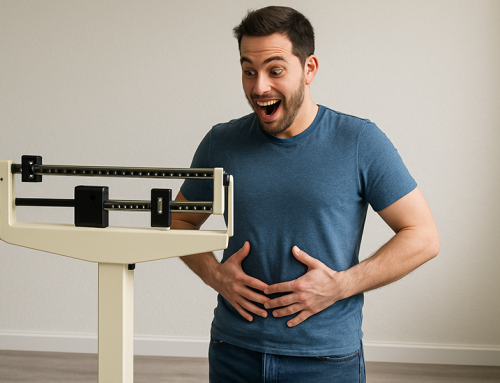
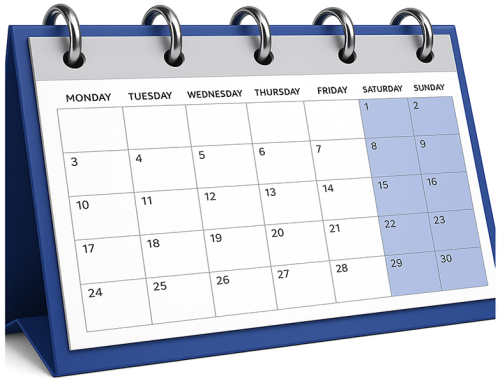
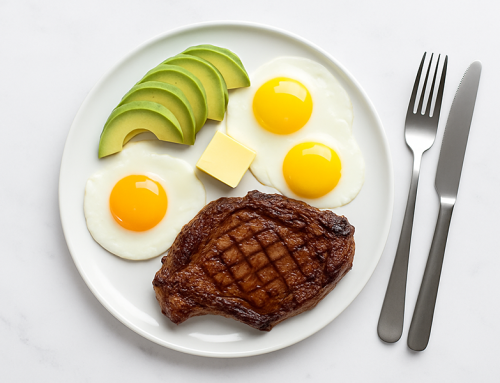

It’s great to find this blog again !
This is an interesting subject. There is a research that actually shows that the testosterone levels are lower in males during cold season than during hot months. Therefore, the level of Estrogen would be higher – that could contribute to difficulties keeping fat off. Plus cals of course. Here’s the article from the European journal
https://www.ncbi.nlm.nih.gov/pmc/articles/PMC5057046/#!po=1.51515
But I was thinking about something else – it’s well known bodybuilders usually “gain” in winter, but since testosterone levels are more optimal for that in summer – do you think that switching between seasons (for those who live in cold climate) can bring better mass gains? ;)